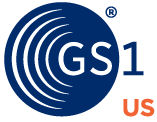All GLNs must have an Administrative Parent. When you create your first GLN, you have to select the Top Level GLN as the parent.
As you start to build additional GLNs, consider building a GLN hierarchy, in which you define a relational structure of locations and parties to support supply chain processes and transactions.
If you are creating GLNs for Healthcare, view the GS1 US Building a GLN Hierarchy document to learn more.



